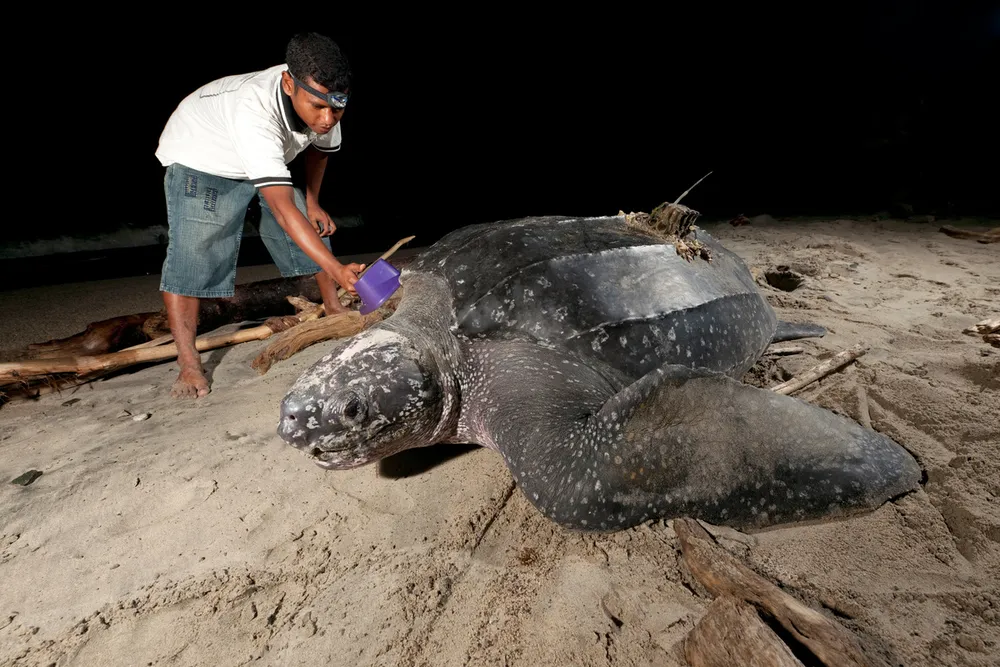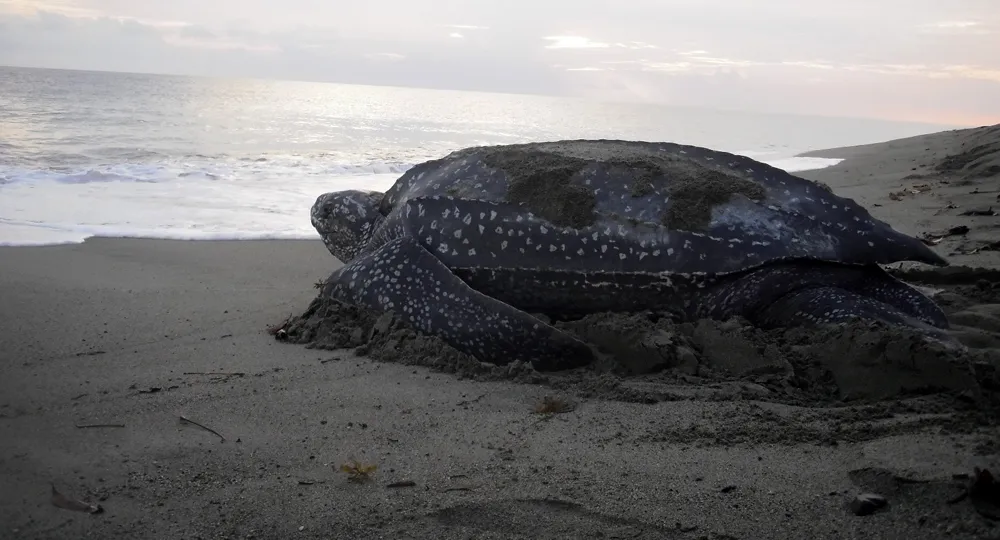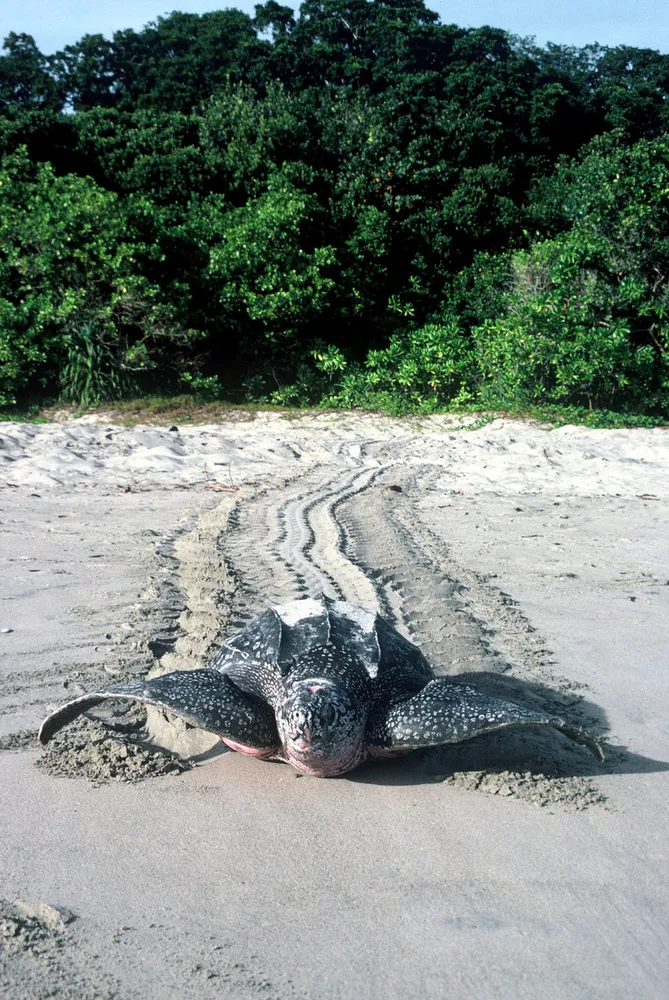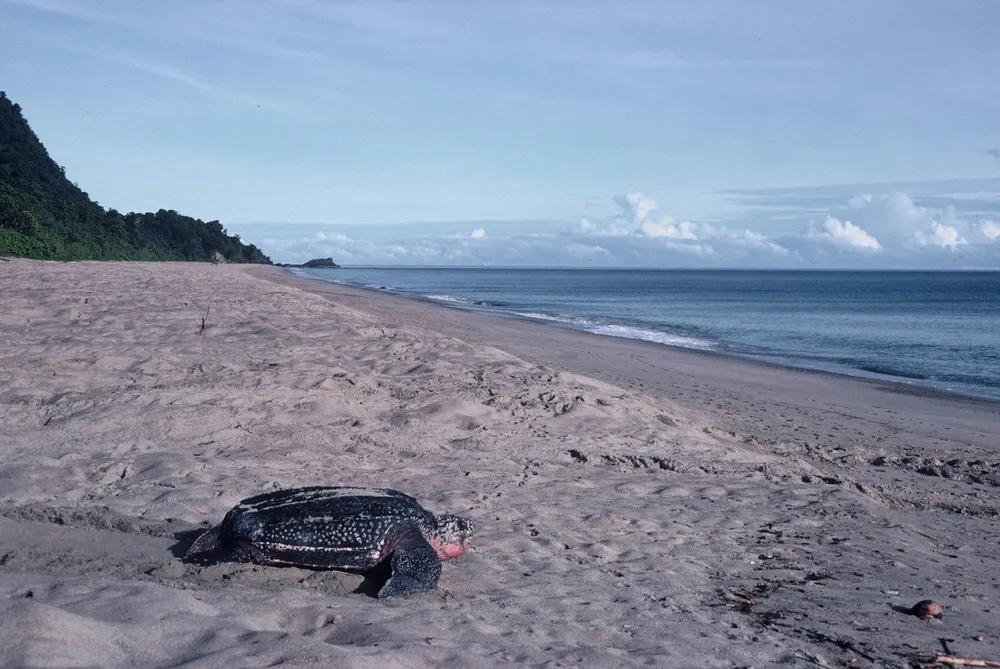
The province of West Papua on the island of Papua is the most important province for the sustainability of turtle habitat. Not only in Indonesia, West Papua also plays a very important role for the world's turtle habitat because Tambrauw Regency is the main habitat for four of the total six species of turtles in Indonesia.
WWF-Indonesia Director of Papua Program, Benja V Mambai explains, turtle habitat in Tambrauw is located in two coastal areas, namely Jamursba Medi (Jeen Yessa) beach and Warmon beach (Jeen Syuab). The two important beaches that fall within the Abun district, in 2015 are then merged into one region and named Jeen Womom beach by the local indigenous people.
The change of name, according to Benja, was done during the traditional ceremony of calling the leatherback turtle (Dermochelys coriacea) by indigenous peoples in that year. Regarding the naming of Jeen Womom, indigenous peoples chose it because it came from the local language and meant as a sea turtle beach. The distance of the two beaches that have been melted reaches 30 kilometers.

A leatherback turtle (Dermochelys coriacea) crawls back into the sea after laying eggs at Jeen Womom Coastal (TP) area, Tambrauw, West Papua. Jeem Womom is designated as a Coastal Park for the main conservation area for 6 species of turtles in Indonesia. Photo: WWF-Indonesia / Mongabay Indonesia
Throughout the year
Technical Leatherback Conservation Management Coordinator WWF-Indonesia Papua Hadi Ferdinandus Program explains, the activity of nesting leatherback turtle happened all year in Syuab Beach which now exist in one area TP Jeen Womom. From 12 months, peak activity lasts about two months from December to January.
in Jeen Syuab there are a number of species of animals that naturally prey on turtles and their eggs, such as wild pigs, dogs (pet and wild), lizards, eagles, crabs and estuarine crocodiles.

For lizards and dogs, has a very good sense of smell, able to detect the presence of turtle eggs with a nest depth of between 30 to 40 centimeters. Even able to detect the existence of leatherback turtle eggs with a depth of nest between about 80 to 100 cm.
From the monitoring of turtles conducted by WWF-Indonesia monitoring team in the period of January-September 2016, Hadi said, found 26 nests damaged preyed by lizards, consisting of 15 turtles nest and 11 turtles nesting leatherback turtle. While the nest damaged by the number of dogs as many as 23 nests and consists of 7 turtles nest turtle and 16 nesting turtles leatherback.

The scarcity of leatherback turtle which is the largest species of turtle today, according to Dwi, is due to the still occurrence of hunting turtle eggs by people around the coast and or the occurrence of accidentally caught by fishing gear.